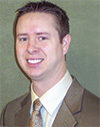This could have major implications of bioavailability of other minerals in the diet and may necessitate the use of chelated, hydroxy- or injectable minerals. In the case of sulfur, increased water intake also represents an increased risk of polioencephalomalacia, particularly in feedlots, if other sources of sulfur such as distillers grains are present at high concentrations in the diet.
If water has to be delivered, be cognizant of the increased intake just outlined. If using a pond as a water source, be careful of blue-green algae blooms to avoid cyanobacteria poisoning. These blooms are most prevalent in late summer and early fall when water becomes hot and stagnant.

In addition to having a clean and cool source of water, location of that water is extremely important, particularly in cow-calf operations. Research from the universities of Missouri and Wyoming have shown grazing uniformity and grazing efficiency exponentially decrease as distance from water source increases.
Research would suggest the most efficient grazing is conducted within 800 feet of a water source, and utilization of forage more than 1,200 feet from the water source is poor. Moreover, cows drink about 15 percent more water when the water source is within 800 feet.
This increased water intake can equal increased weaning weights, as milk is about 90 percent water. Moreover, pregnancy rates may be improved as a result of better heat stress mitigation. It may be necessary to relocate water sources or consider re-designing grazing cell or paddock layouts to improve efficiency based on water location.
As always, for more information on water quality and quantity for the beef herd, consult with the team of experts you have assembled including your beef extension specialist, nutritionist and herd health veterinarian, and visit Iowa beef center for all things beef. ![]()

-
Patrick Gunn
- Assistant Professor of Animal Science
- Iowa State University
- Email Patrick Gunn







